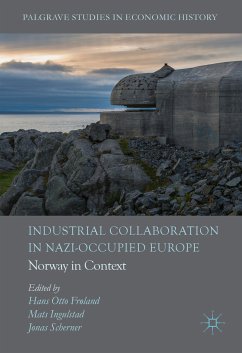This book brings together leading experts to assess how and whether the Nazis were successful in fostering collaboration to secure the resources they required during World War II. These studies of the occupation regimes in Norway and Western Europe reveal that the Nazis developed highly sophisticated instruments of exploitation beyond oppression and looting. The authors highlight that in comparison to the heavy manufacturing industries of Western Europe, Norway could provide many raw materials that the German war machine desperately needed, such as aluminium, nickel, molybdenum and fish. These chapters demonstrate that the Nazis provided incentives to foster economic collaboration, hoping that these would make every mine, factory and smelter produce at its highest level of capacity. All readers will learn about the unique part of Norwegian economic collaboration during this period and discover the rich context of economic collaboration across Europe during World War II.
Dieser Download kann aus rechtlichen Gründen nur mit Rechnungsadresse in A, B, BG, CY, CZ, D, DK, EW, E, FIN, F, GR, HR, H, IRL, I, LT, L, LR, M, NL, PL, P, R, S, SLO, SK ausgeliefert werden.









